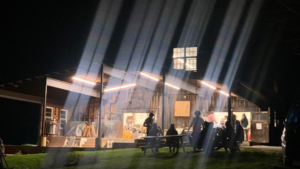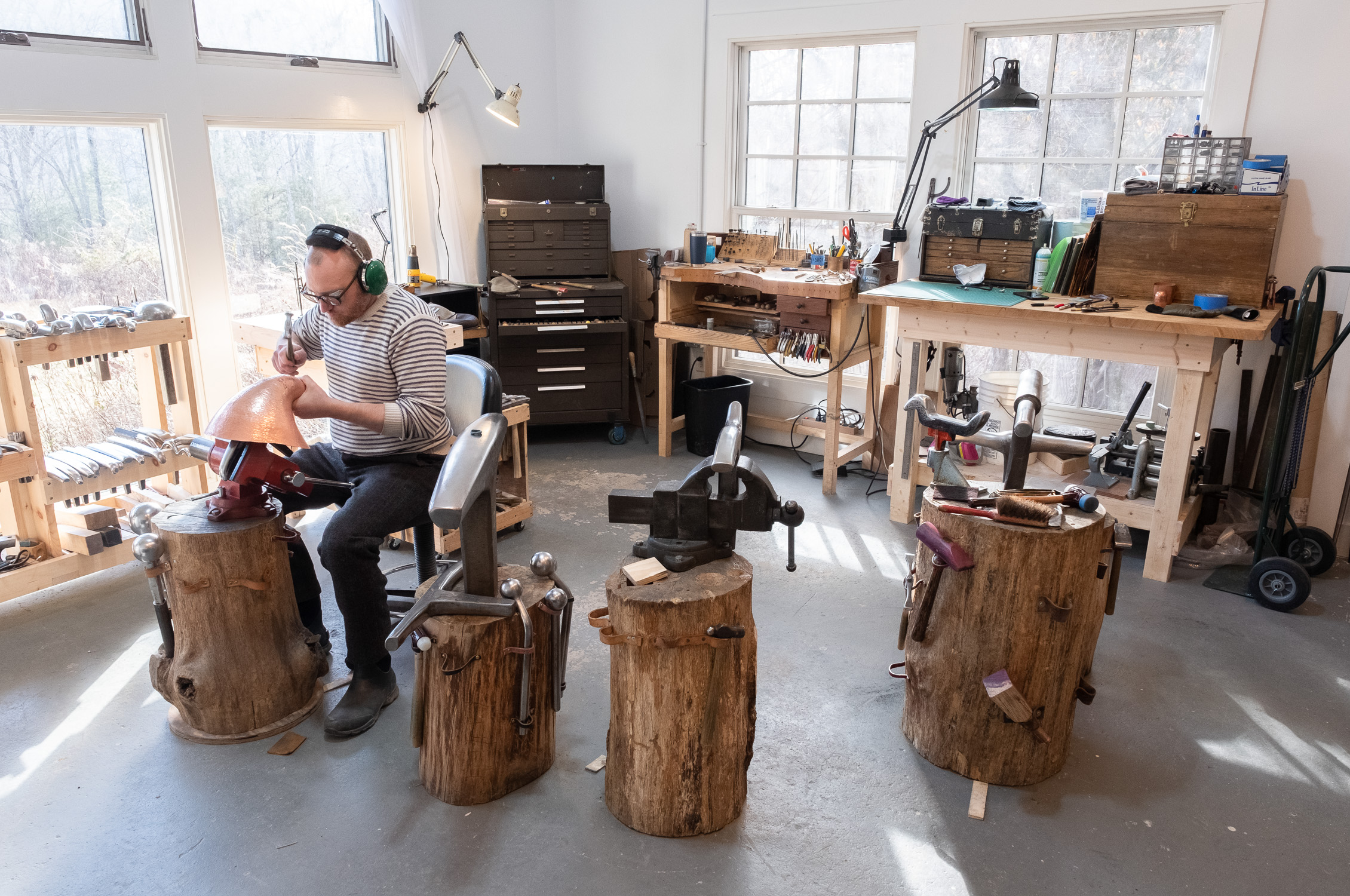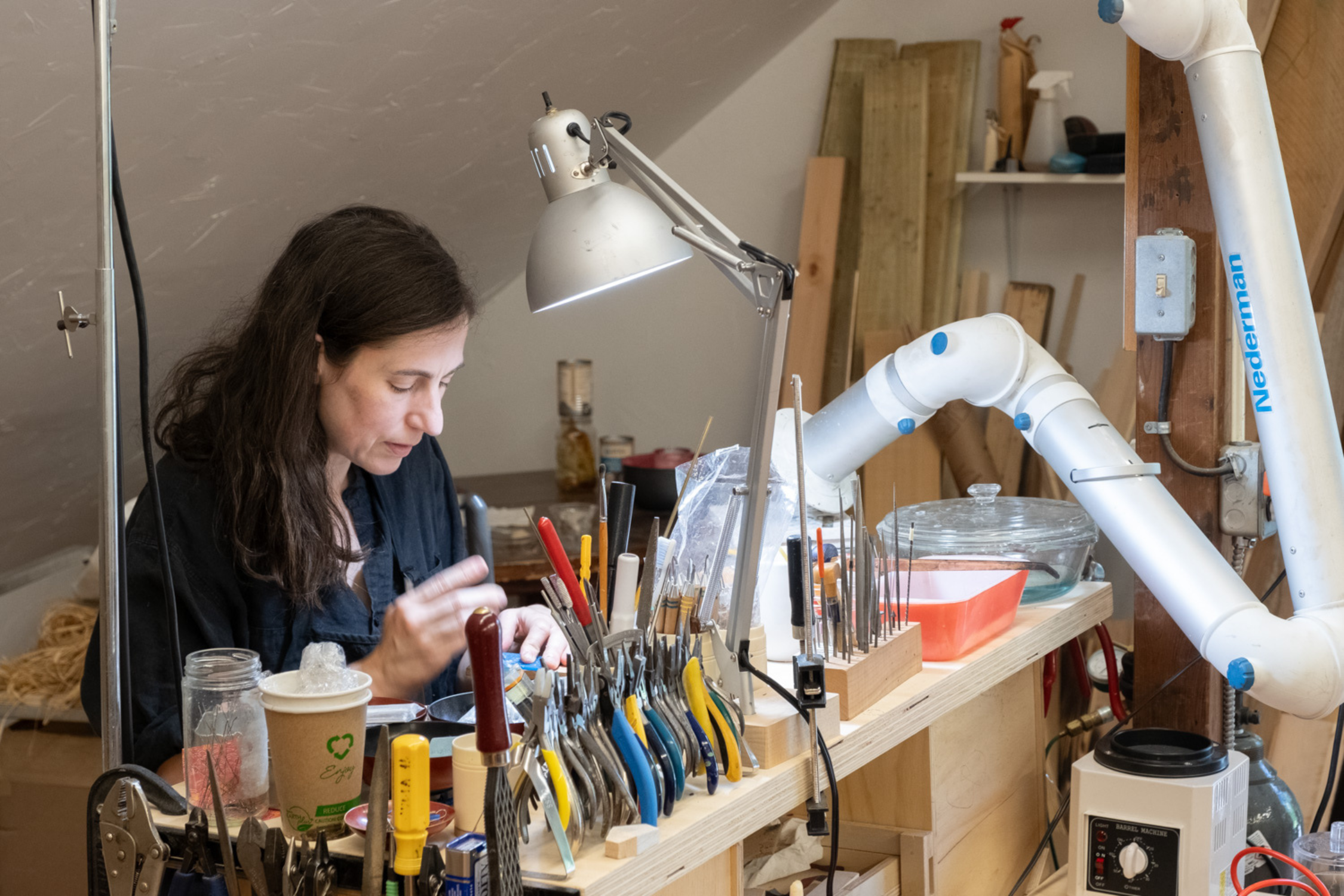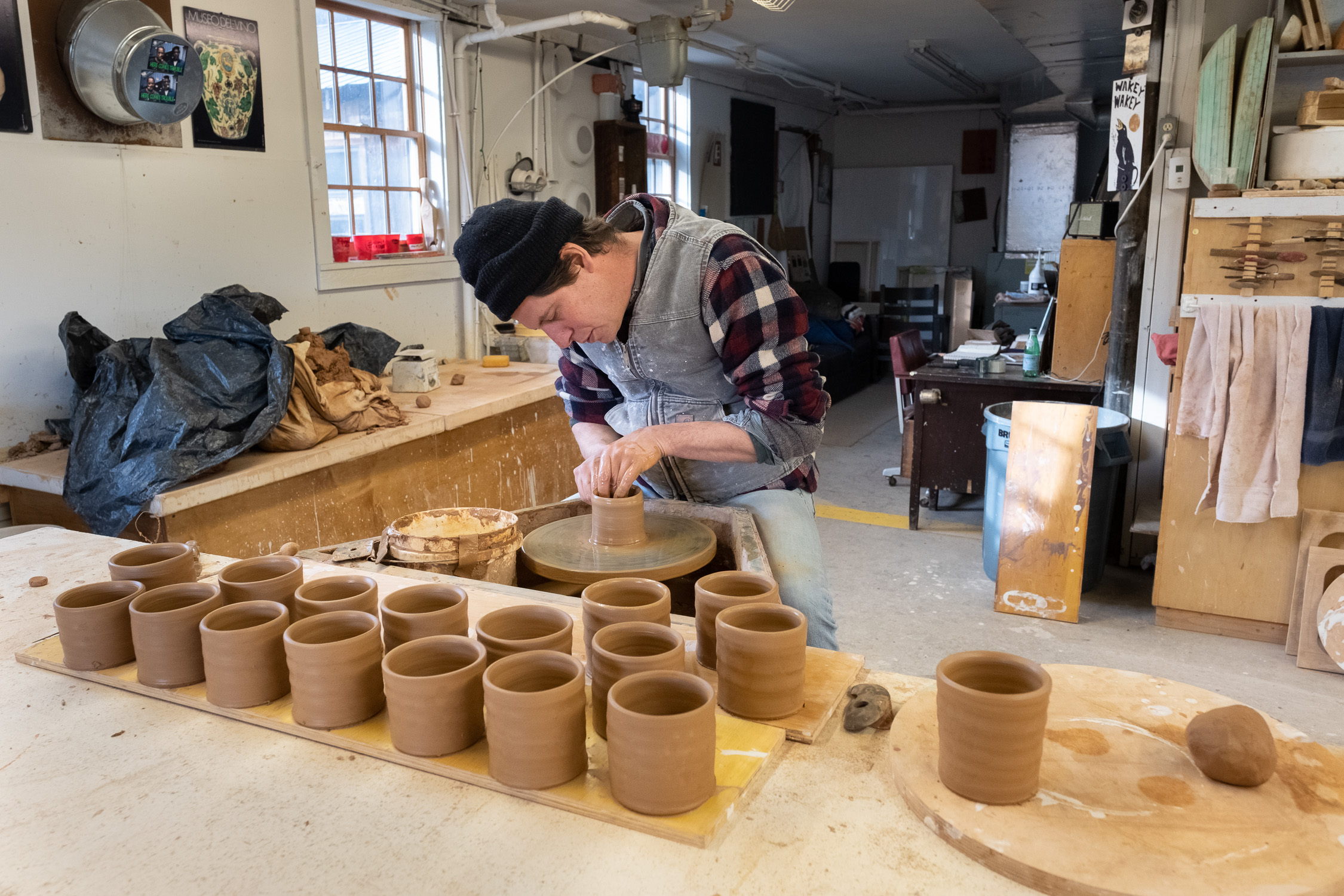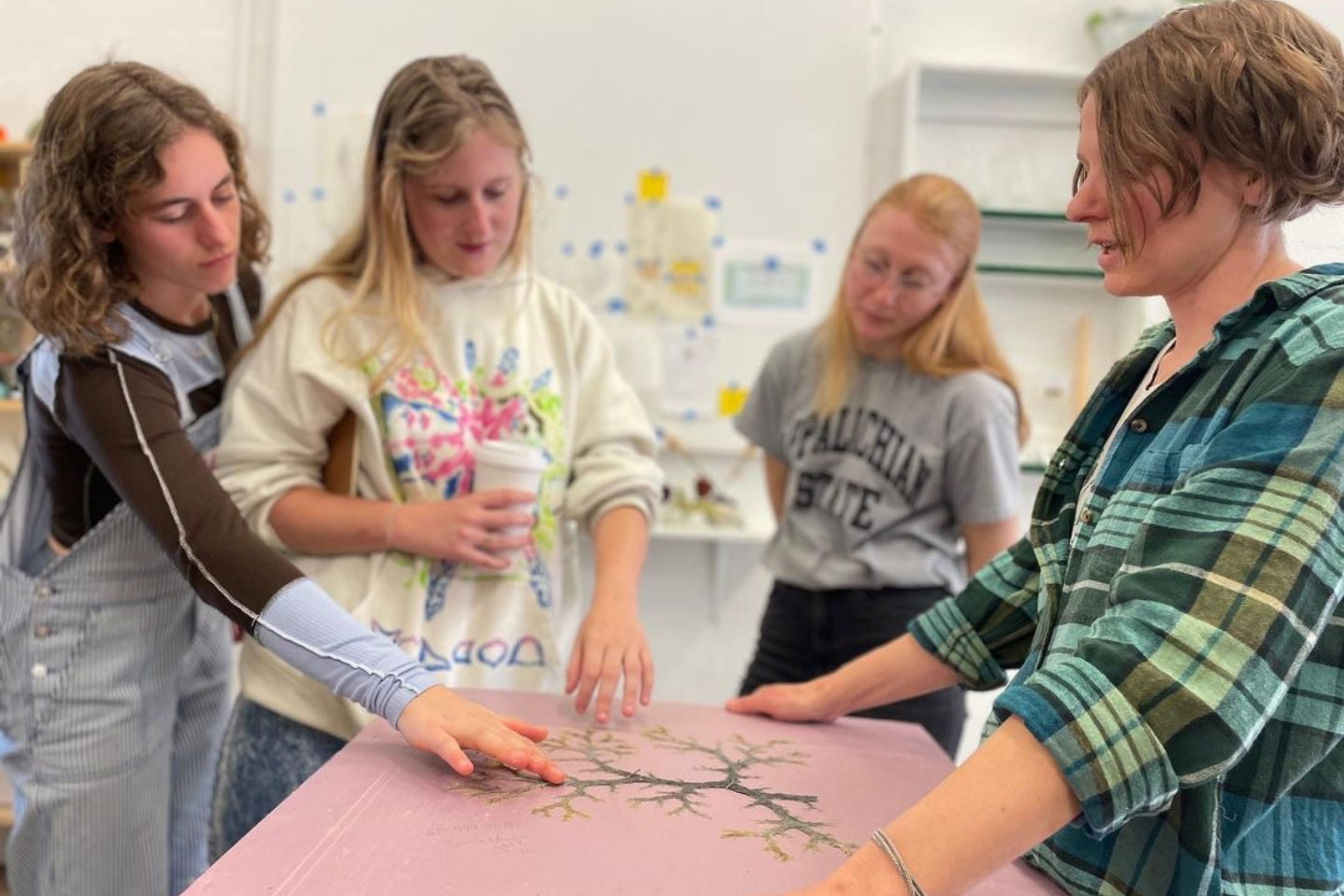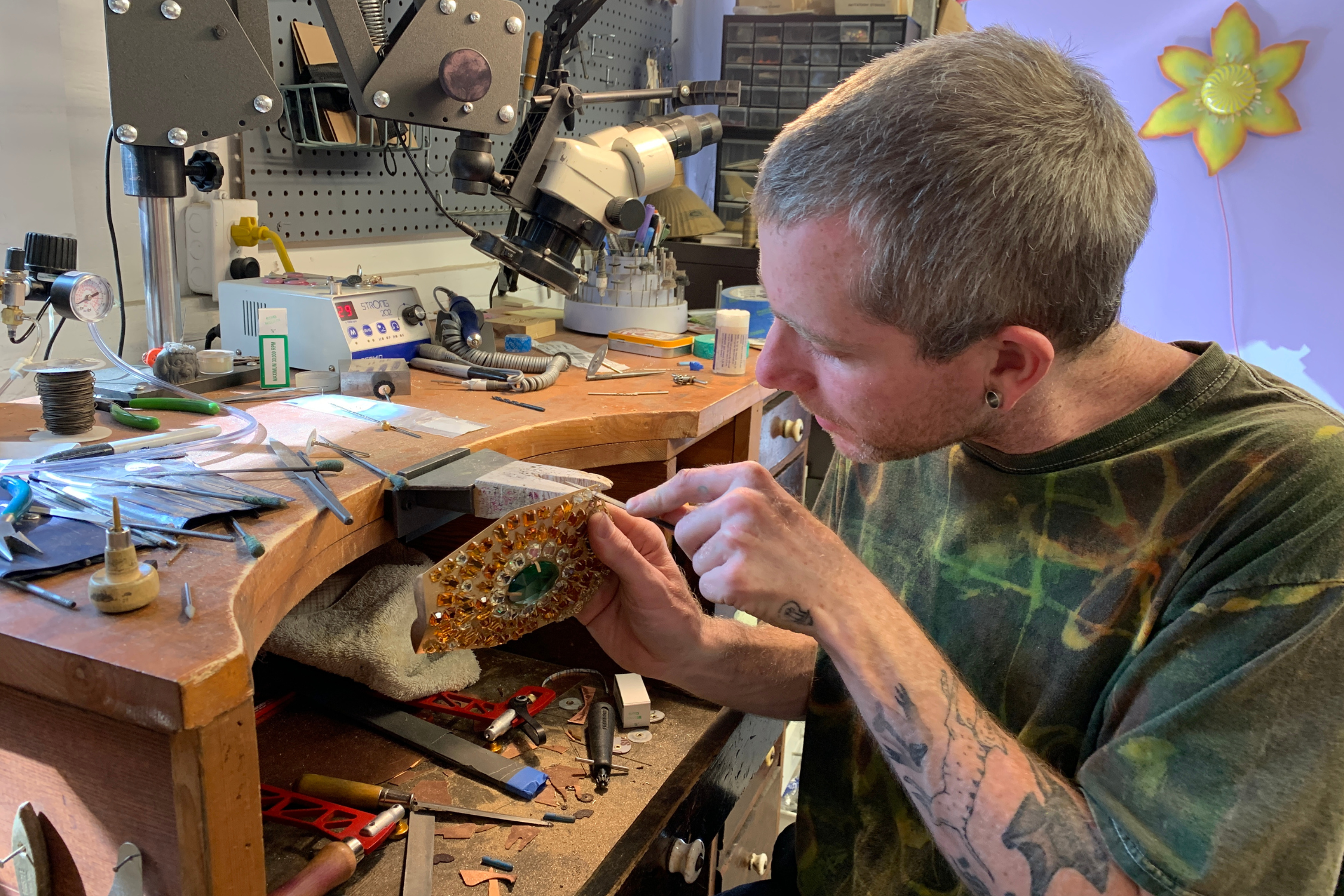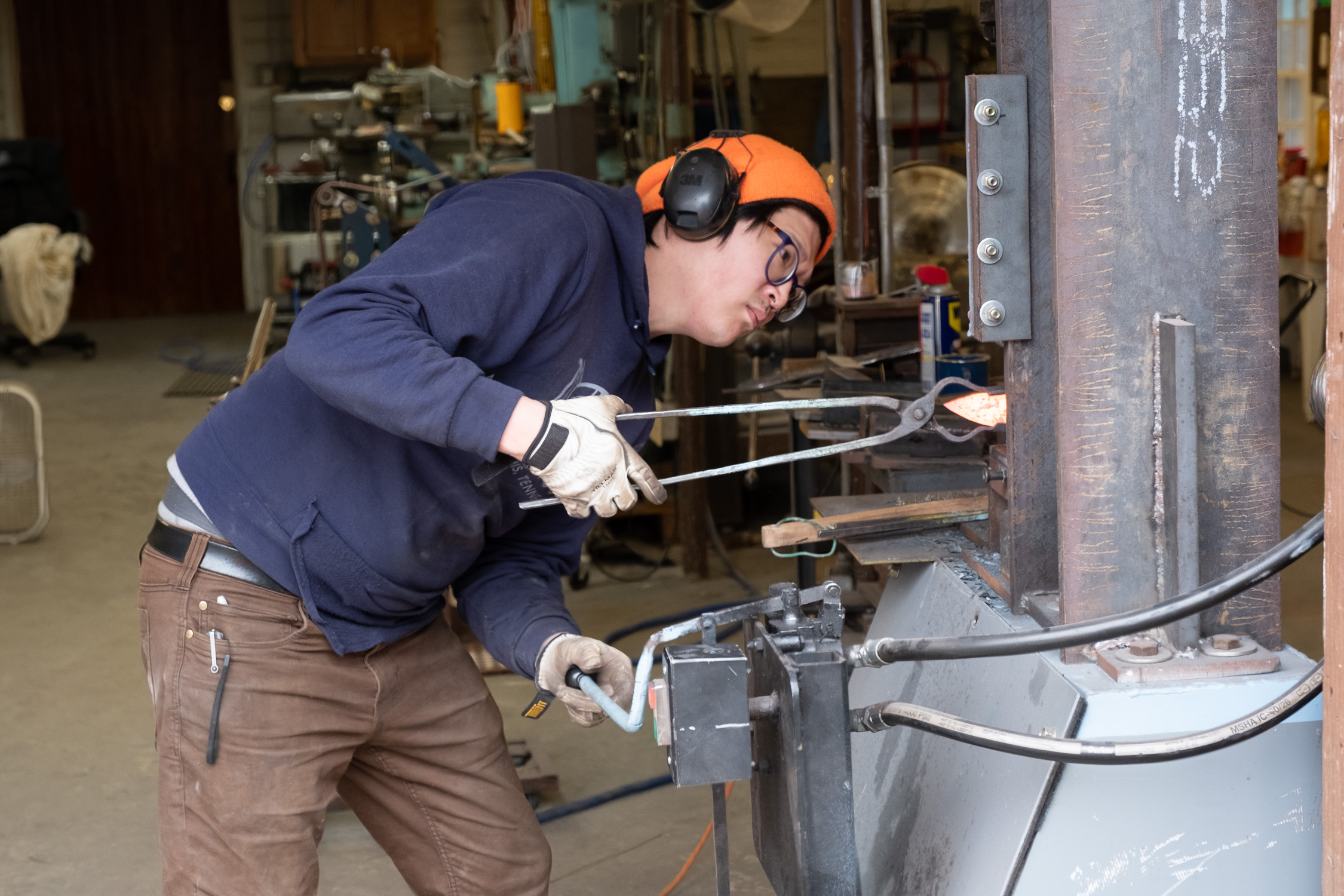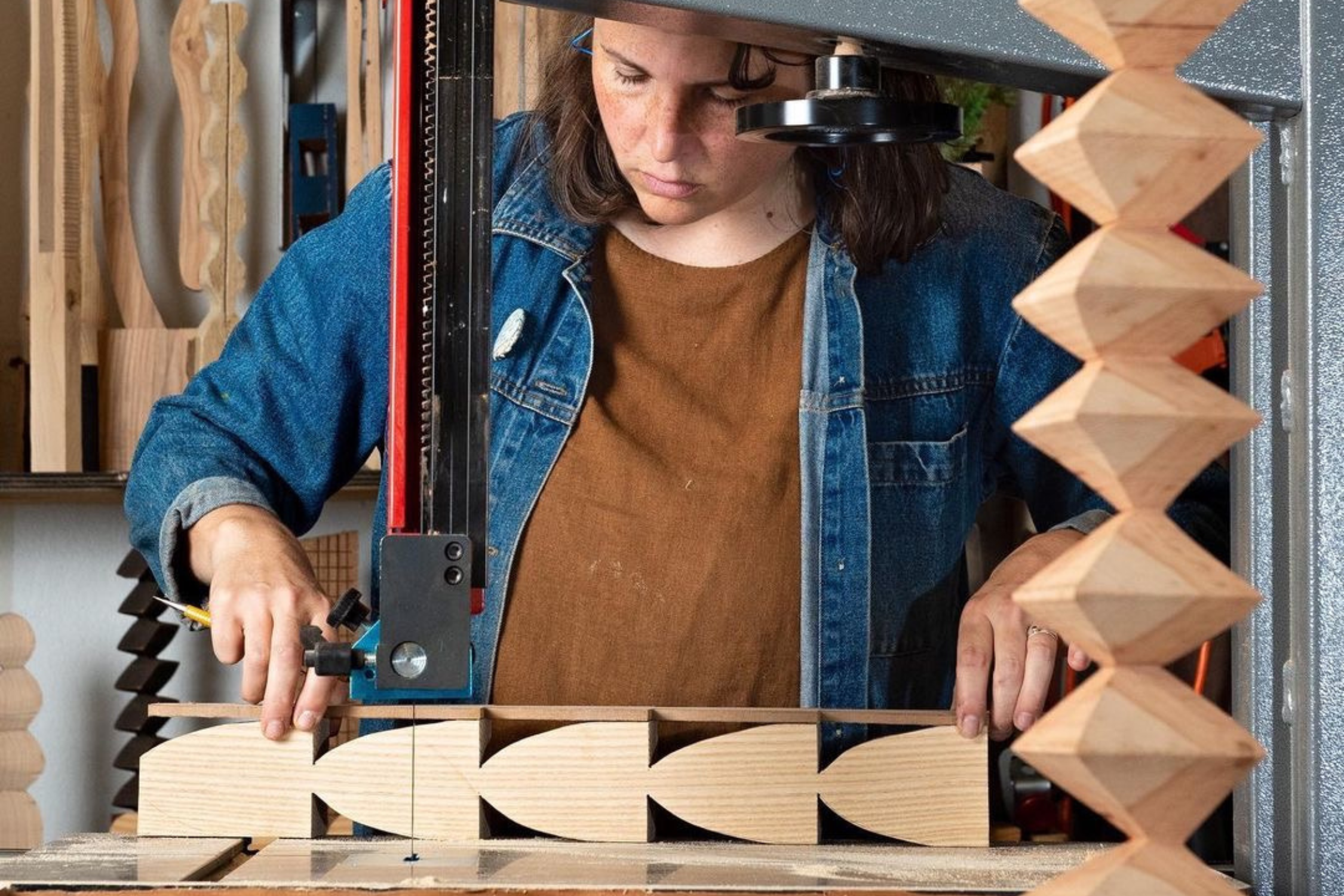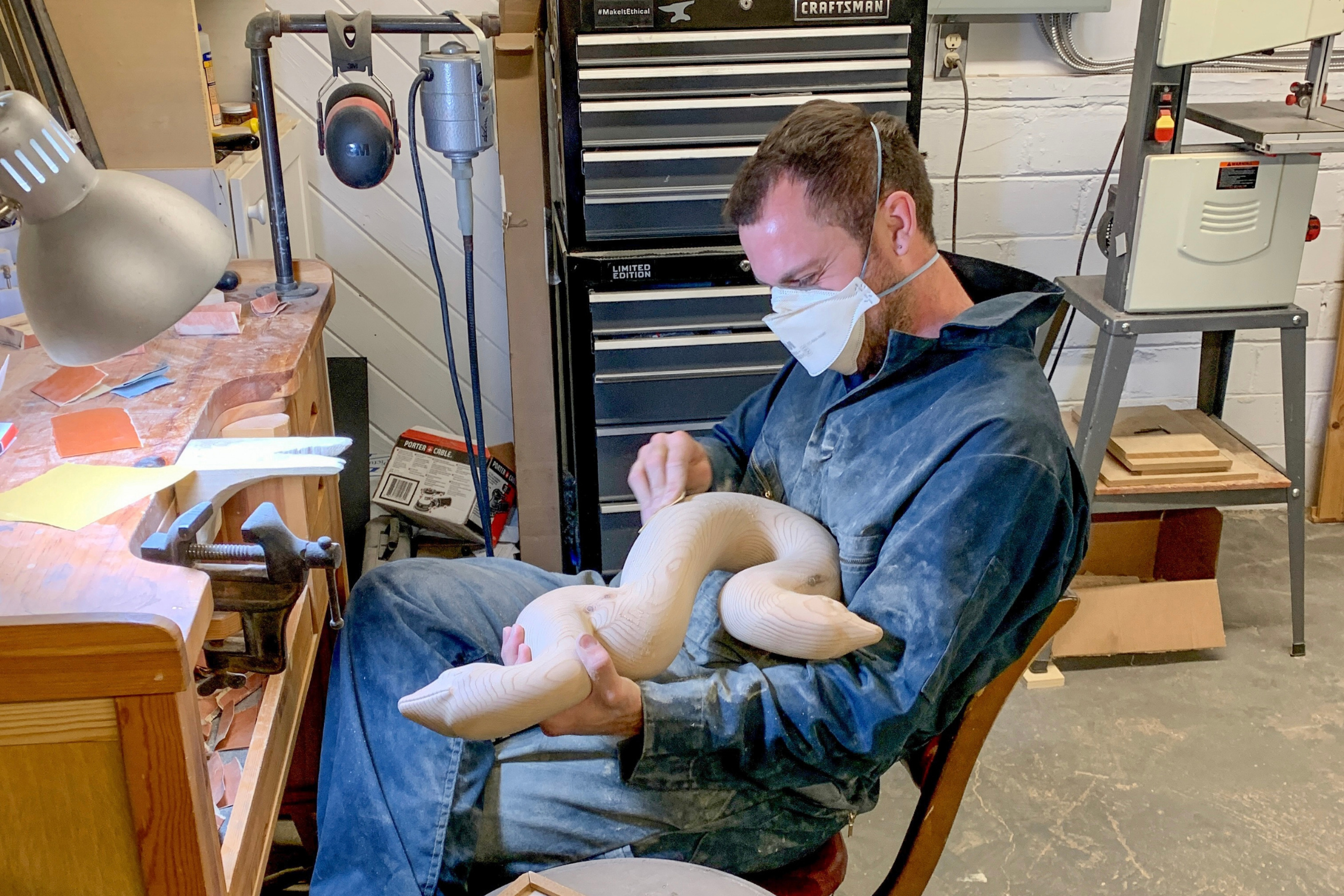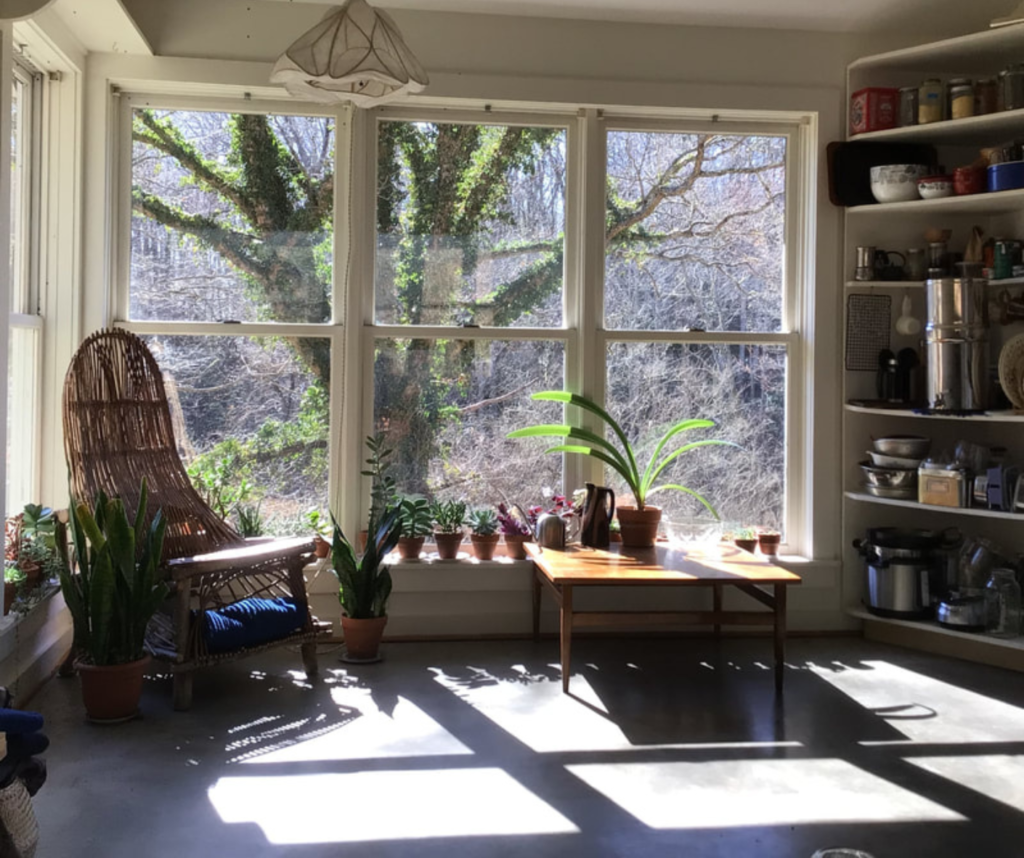Penland Resident Artist Program
Applications will be accepted on slideroom from May 1 through July 2, 2024.
Overview
Penland’s Resident Artist Program, established in the 1960s, is one of the longest-running residencies in the US. The program is designed for professional craft artists who are at a pivotal moment in their creative practice or career—the residency is an opportunity for them to pursue objectives that will have a lasting effect on their work and their lives. Depending on the nature of an applicant’s goals, we offer two options for interested candidates.
- 1-year project-based residency; artists submit a project proposal and may use the time to push technical and conceptual boundaries, conduct research and development in a particular topic or process, or explore an entirely new aspect of their work.
- 3-year career transition residency; artists submit objectives to advance their studio practice, to work out the practicalities of making a living, or to make a formative transition in their career path.
Goals
We are committed to advancing equity at Penland and within the craft field. We recognize that though many of our programs serve a diverse group of artists, our Resident Artist Program does not. Over the next few years we will test two residency models prioritizing the following goals:
- To build a multicultural residency that shapes the future of contemporary craft by creating opportunity and visibility for innovative artists with a range of perspectives and goals
- To recognize artists whose work shows innovation, intention, and skill; are actively engaged in professional artistic practices; and are committed to proposing and prioritizing a project or objective that can be well supported, informed, and inspired by a residency at Penland
- To offer financial relief—in the form of housing, studio, and utilities—to directly support studio artists as they make a formative leap in their work and career
Residency
The primary expectation of resident artists is that they engage intently with their work. They are also expected to welcome other residents, students, instructors, and visitors to their studios through informal and formal studio visits. Resident artists join our larger school community during meal times each session and are also welcome to visit classes, attend slide lectures, and participate in various aspects of life at the school. Each resident is also invited to enroll in one short workshop, tuition free, during their residency. The school hosts educational workshops from March through November and a short Winter Residency in January, so this is our season of visitors and activity. Residents enjoy interludes of quieter, more focused studio time when the school pauses between programs.
Resident artists work independently and pursue their stated goals for their residencies. They do this, however, in an atmosphere of encouragement surrounded by a community of makers. Their studios and living spaces are clustered so that interaction with other resident artists is inevitable. All resident artists are represented by the Penland Gallery, and they are also encouraged to show and sell work directly through their studios and other galleries. Living at Penland also means they are surrounded by the many working craftspeople who live nearby as well as the national and international Penland community that constantly comes and goes throughout the year.
The experience of living at Penland is shaped in many ways by its rural location, its mountainous terrain, and by the age and nature of the facility. A successful residency depends in part on expectations consistent with what Penland has to offer.
Resident artists are selected through a competitive process that draws applications from all over the country and abroad. At the end of their residency, some Penland resident artists move on to other residencies or decide to pursue teaching careers, but the great majority of them continue as studio artists and build on the work they started at Penland.
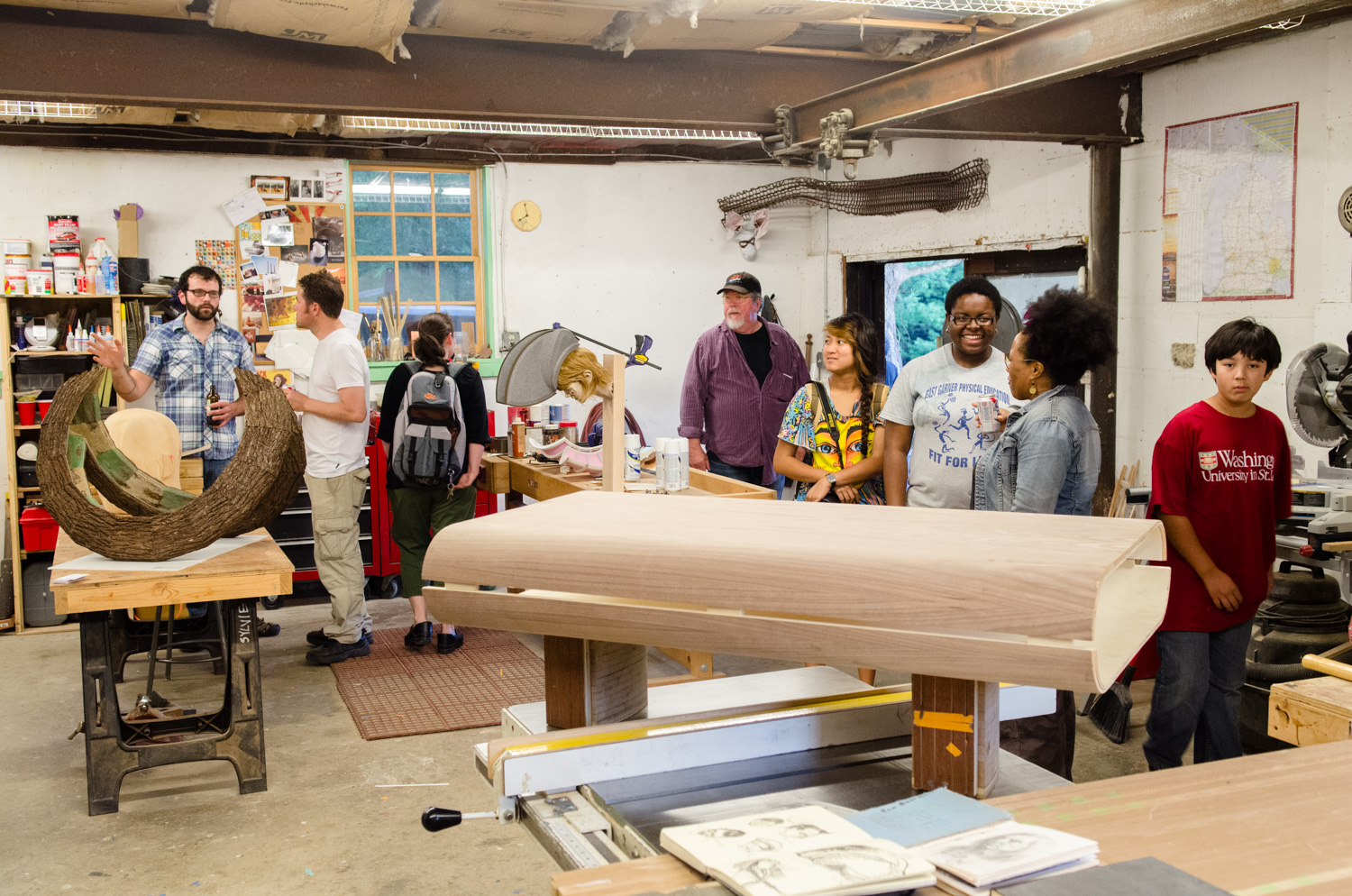
Qualifications and Review Process
We encourage self-motivated, focused individuals working in traditional and nontraditional studio crafts to apply for a residency. No prior connection to the school is required to apply. Penland celebrates varied ideas, world views, and personal characteristics, and is committed to being an organization that welcomes and respects everyone regardless of age, ability, ethnicity, race, religion, philosophical or political beliefs, sexual orientation, gender identity or expression, nationality, geographic origin, and socioeconomic status.
Applications are reviewed by a national committee of artist peers, curators, educators, and other arts professionals who are knowledgeable about material-based work and the craft field in general and understand what it takes to be successful in a self-directed residency. Panelists rotate frequently to bring a range of new perspectives to the application process, and creating a diverse group of residents is one of the stated goals of selection.
Applications are scored by the review panel using the following criteria:
- We factor equity and diversity into all of our decision-making.
- Portfolios are scored in three areas: innovation, intention, and skill.
- Applications must present a clear, compelling proposal for a 1-year project or 3-year objectives that can be well supported, informed, and inspired by a residency at Penland.
- CVs are reviewed to determine if a candidate is actively engaged in professional artistic practices.
- The particular qualities of the available studios and a balance of media will also be a factor.
All media taught at Penland are considered appropriate for the Resident Artist Program: books, clay, drawing/painting, glass, letterpress, iron, metals, papermaking, photography, printmaking, textiles, and wood. Most resident studios are not media-specific; however, the particular qualities of the available studios and the balance of media represented by the current group of resident artists sometimes limit each year’s openings to a range of media.

Responsibilities
Penland encourages interaction between residents and its other programs. This may include giving an occasional demonstration for a Penland workshop, hosting a group of students or visitors for a studio visit, mentoring a core fellow, participating in a fundraising event, or simply getting to know students and instructors while they’re at Penland. Residents are asked to host an open studio evening during each Penland session (about seven events throughout the year) and to maintain an open-door policy at their studios during work hours. They participate in the Annual Benefit Auction and are encouraged to participate in resident group exhibitions and other events on campus and elsewhere as they arise. There is no teaching obligation, but for those interested, there may be short-term opportunities.
Cost to Resident Artists
- There is no cost to residents for housing, studio space, or utilities.
- Artists are responsible for providing tools and equipment vital to their daily studio practices; resident artist studios are simply raw studio spaces.
- Artists are responsible for travel expenses to and from Penland
Application Deadline and Openings
The application deadline is July 2, 2024. Due to some renovations scheduled for resident housing and studios, our 2025 residency cohort will be smaller than usual: 4 residents rather than a more typical group of 7. We anticipate having only 2 openings for this application cycle. We will be accepting applications in all media for residencies that begin in mid-March 2025.
Informational Session
Wednesday, June 5, 2024 5-6pm EDT via Zoom. This informational session has passed, to receive a recording, email programsassistant@
To Apply
Applications are accepted through SlideRoom from May 1, 2024 until the deadline, July 2, 2024. Please find the application here.
A Deeper Look:
Questions
Please carefully review more detailed information here: Resident Artist Program FAQ
If you have questions related to the Resident Artist Program, you can direct them to:
Luke Dawson, Programs Assistant
828-765-2359 ext. 1005
programsassistant@penland.org




